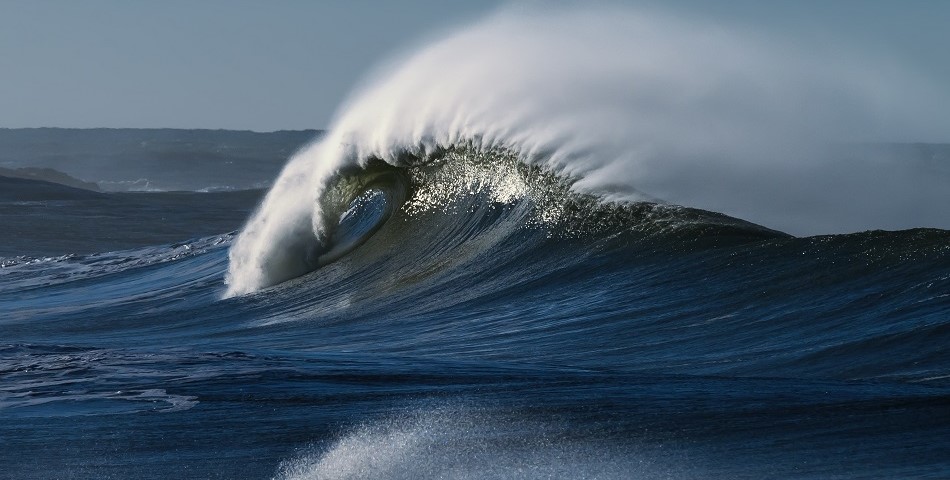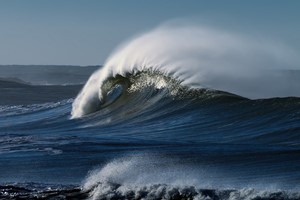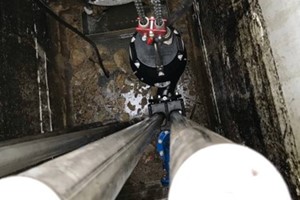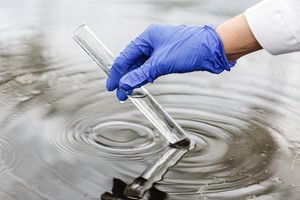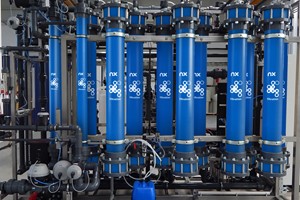Once-Through Flash Desalination Plant
An evaporator consists of several consecutive stages (evaporating chambers) maintained at decreasing pressures from the first stage (hot) to the last stage (cold). Sea-water flows through the tubes of the heat exchangers where it is warmed by condensation of the vapor produced in each stage. Its temperature increases from sea temperature to inlet temperature of the brine heater. The sea water then flows through the brine heater where it receives the heat necessary for the process (generally by condensing steam). At the outlet of the brine heater, when entering the first cell, sea water is overheated compared to the temperature and pressure of stage 1. Thus, it will immediately "flash" ie release heat, and thus vapor, to reach equilibrium with stage conditions. The produced vapor is condensed into fresh water on the tubular exchanger at the top of the stage. The process takes place again when the water is introduced into the following stage, and so on until the last and coldest stage. The cumulated fresh water builds up the distillate production which is extracted from the coldest stage. Sea water slightly concentrates from stage to stage and builds up the brine flow which is extracted from the last stage.
Flash Desalination Plant with Brine Recycling
The once-through flash type evaporator uses the sea-water flow both for purposes of cooling (sea-water is introduced into the evaporator at the sea temperature and is rejected at the brine temperature) and production of distillate (by flashing from the outlet temperature of the brine heater to the brine extraction temperature). This has two consequences on plant design:
- The whole sea water flow being heated to high temperature; it has to be treated with anti-scale which increases operating costs.
- As the sea water flow cannot be decreased below values allowing safe working conditions, the stages must be designed for winter operation, leading to an increased evaporator volume and thus increased investment costs.
These two points have led to the separation of the two functions (cooling and production).
The cooling sea-water flows through the condensers of the two (or generally three) last stages, named "heat reject section". Upon leaving the evaporator, part of the warmed water is rejected to the sea, part is used as the make-up for the plant. Only this part of the water is treated instead of the whole cooling water. The production is insured by the brine recycling flow that is drawn from the last stage towards the condensers of the other stages, named "heat gain section", and then to the brine heater. The warmed water leaving the heat reject section may be used in winter to warm up the cooling sea-water, thus enabling the evaporator volume to be designed for a reasonably high temperature. MSF plants with brine recycling are widely used all over the world. Once-through desalination plant should only be used for small plants (when the cost of the chemicals is not of great importance) and in areas where the temperature of the sea-water remains approximately constant throughout the year.




